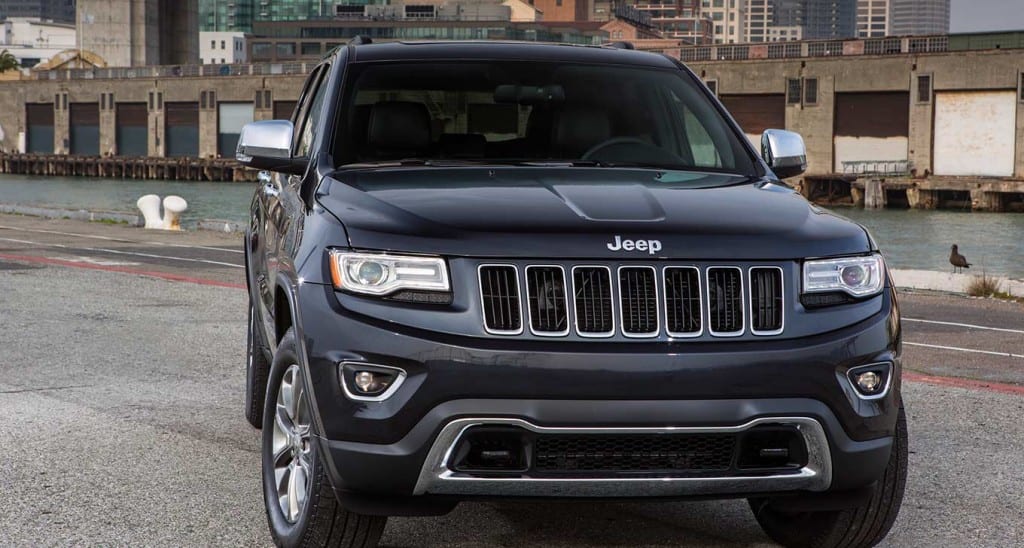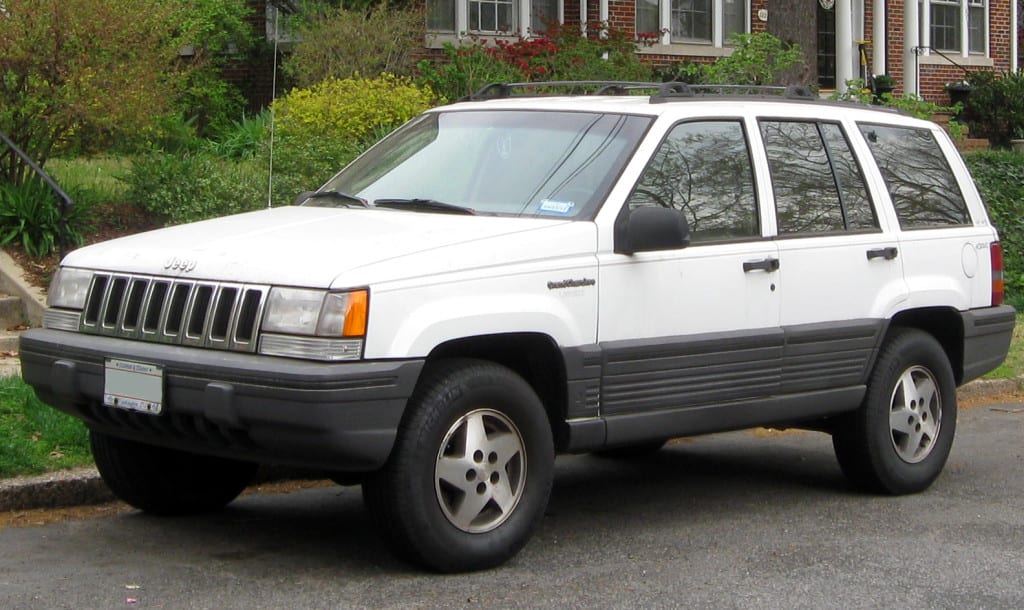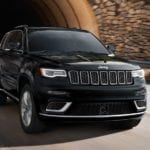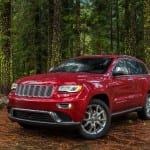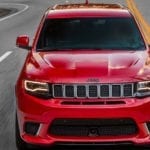Shopping for a used vehicle can be difficult, as there are a variety of options for you to choose from. If you’ve established that you want to pursue an SUV, what brand do you opt for? Once you’ve determined that, which model do you choose? Trim? Year?
It can be a rather stressful experience shopping for a used ride, but maybe we can help ease your anxiety. If you are in fact seeking a used SUV, there’s no better option than the Jeep Grand Cherokee. Of course, as we mentioned, you’ll still have several choices to make after landing on this particular nameplate.
The Grand Cherokee has been around since 1993, giving you plenty of models to choose from. Would you rather spend less money and opt for the first generation SUV, or maybe you’d rather dish out some cash for a more recent model. Luckily, each of the used Jeep Grand Cherokee options is perfectly capable, as you’ll learn below…
First Generation
With the brand looking to establish itself within the luxury SUV segment, they released their new Grand Cherokee. The first-generation “ZJ” was released in 1992 for the 1993 model year, and it stayed on the market until 1998.
The vehicle originally included a 4.0-liter Straight-Six engine, which could pump out 190 horsepower and 225 pounds-feet of torque. This unit was accompanied by either a four-speed automatic transmission or an Aisin AX15 manual transmission, and the vehicle also offered rear-wheel drive and four-wheel drive capabilities.
There were several trim levels that initially accompanied the Grand Cherokee, including the base, Laredo and Limited trim. The base (or SE) model was pretty bare bones, including full instrumentation, a cloth interior, and a five-speed manual transmission (power windows or locks weren’t even standard equipment). Despite the affordable price tag, customers tended to opt for the more decked-out versions of the Grand Cherokee, leading to the base model’s quick retirement.
Meanwhile, the Laredo trim included power window and locking capabilities, and it also offered cruise control and a leather-wrapped steering wheel. The top-of-the-line Limited offered leather seating, heated mirrors, a wood grain interior, and a keyless entry system.
Second Generation
The Grand Cherokee was completely redesigned for the 1999 model year as the brand ushered in their second generation of the nameplate.
One of the most notable changes featured in the “WJ” was the inclusion of the automatic four-wheel drive Quadra-Drive system. Using a New Venture Gear NV247 transfer case, the system helped transfer torque from one axle to the other, which vicariously improved the vehicle’s handling and drivability. The system’s three contrasting driving modes helped control the mechanics for specific scenarios. For instance, the neutral mode would manipulate the torque to help improve the towing capabilities.
The 4.0-liter Straight-6 engine stuck around, and it even offered improved power specs (195 horsepower, 230 pounds-feet of torque). However, this unit was quickly overshadowed by the 4.7-liter V8, which could pump out an incredible 235 horsepower and 295 pounds-feet of torque. The new unit was considerably lighter than the alternative option, and it also delivered a better fuel economy. The pair of engines could be accompanied by the 45RFE and 545RFE automatic transmission, with both options essentially offering drivers six different speed offerings.
The changes to the second-generation Grand Cherokee weren’t solely mechanical. The brand partnered with Porsche to construct a stronger, more durable frame. The steel beams, rails, and pillars contributed to better stiffness and rigidity, and the UniFrame construction helped keep passengers safe and sound.
Due to the inclusion of larger rear doors, the Grand Cherokee presented more interior space for rear passengers. Engineers switched around some of the controls (like headlights or rear wipers) to make them more driver-friendly, and the Vehicle Information center was placed above the windshield to give drivers a better view of the road.
Third Generation
The next version of the Grand Cherokee was introduced at the 2004 New York International Auto Show. Similar to the second-generation, the revamped vehicle was highlighted by the inclusion of new mechanics.
Among the major inclusions were the Quadra-Drive II four-wheel drive system, as well as the optional 5.7-liter Hemi V8. This new unit could pump out 325 horsepower and 375 pounds-feet of torque, and these numbers were increased to 357 horsepower and 389 pounds-feet of torque in 2009. Plus, thanks to the variable valve timing, drivers would find that the engine was extremely fuel efficient. Meanwhile, the 3.7-liter replaced the 4.0-liter unit, with the new inclusion capable of producing 215 horsepower and 235 pounds-feet of torque.
As they were designing their exterior, engineers were particularly focused on reducing the vehicle’s noise, vibration, and harshness. A number of mechanical changes ended up contributing to the realization of these lofty goals. For instance, the new leading-arms front suspension didn’t only improve the vehicle’s drivability, but it also influenced the overall driving experience.
Fourth Generation
The current generation of Grand Cherokees was shown at the 2009 New York Auto Show, and the nameplate ultimately hit dealership lots in the summer of 2010. The new SUV retained many of its most beloved attributes, but engineers also looked to modernize the exterior and interior.
The chassis was still composed of a steel unibody, but the accompanying four-wheel independent suspension was revamped to improve off-road capabilities. Meanwhile, the optional Quadra-Lift height adjustable air suspension system help boost the vehicle’s ground clearance. In regards to four-wheel drive systems, customers could opt for all of the brand’s offerings (Quadra-Trac I, Quadra-Trac II, Quadra-Drive II). The interior was highlighted by the premium leather trim and real wood accents. The Bluetooth and UConnect system was also offered in the new Grand Cherokee.
Engine options were highlighted by the new 3.6-liter Pentastar V6 and the returning 5.7-liter Hemi V8. The V6 could crank out 290 horsepower and 260 pounds-feet of torque, while the Hemi V8 produced 360 horsepower and 390 pounds-feet of torque. The V8 was accompanied by the Multiple Displacement System, which limits four cylinders in low-power situations. The unit is also joined by a multi-speed automatic transmission, which impacts the incredible 7,400-pound towing capacity.
The fourth-generation Grand Cherokee was well received following its release. The nameplate won over 30 awards for its style, safety, technology, and driving capabilities, making it the most awarded SUV of all time. In particular, the vehicle was named a Top Safety Pick by the Insurance Institute for Highway Safety, a 2011 Best Buy by Consumers Digest, and Truck of the Year by the Detroit News.
These accolades ended up influencing the Grand Cherokee’s place in the SUV market. While the company had traditionally sold upwards of 200,000 units a year, sales slowly dropped throughout the mid-2000s. By the time 2009 came around, the brand sold only 50,328 units, their lowest sales numbers in more than a decade. With the release of the fourth-generation Grand Cherokee, numbers are back on the rise. The brand has seen consistent growth over the past five years, culminating in 195,958 units sold in 2015.
The vehicle has proven itself among the best in the SUV class, and even the older models still stand up to some newer, rival vehicles. The engines have consistently delivered exceptional power specs, the interiors have been refined for optimal style and comfort, and the exteriors have been designed for maximum safety and drivability. No matter what Jeep Grand Cherokee you ultimately opt for, we’re certain you’ll be happy with your decision.
